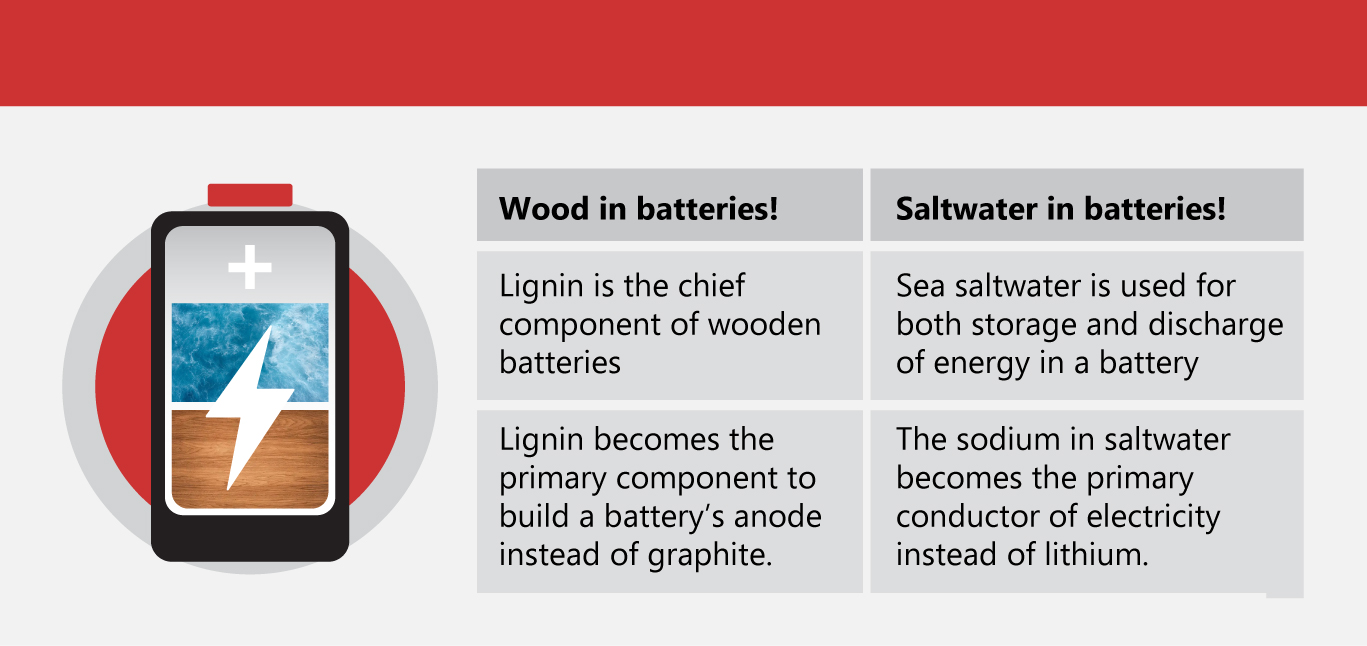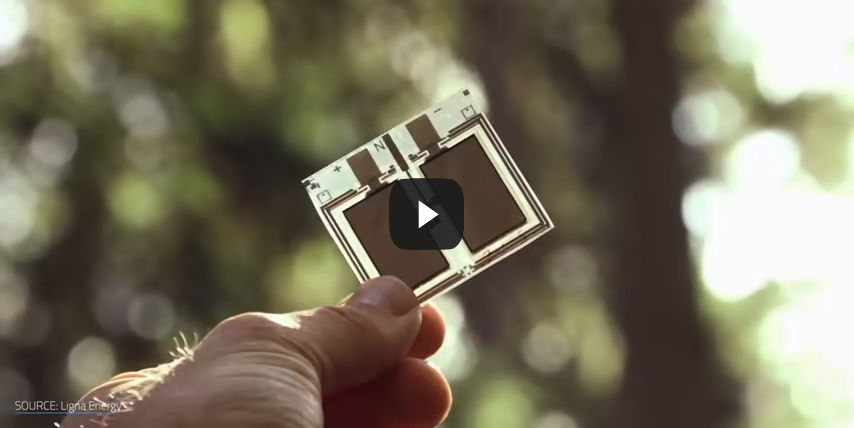Have You Heard of Wooden Batteries?

It’s possible that in the near future, our batteries could be made of wood (and also sea saltwater).
Conventional batteries rely heavily on mining for essential minerals required to build them, but a few innovators are already leveling up their battery game and using non-metal materials to build better, more sustainable batteries and battery storage.
(Also read: Powering the EV Arms Race)
Two of these materials are wood and sea salt water.
A Battery’s Wooden Heart
In January 2023, the BBC reported that a company from Finland developed a way to use a polymer found in trees called lignin to produce batteries. Lignin is what makes wood have that “woody” property, and keeps wood from rotting. Trees are made up of about 30% lignin, and the rest of it is cellulose.
Lignin contains carbon, which makes it a suitable material for one of the most important parts of a battery—the anode, which conventionally uses graphitic carbon in lithium-ion batteries.
The company, Stora Enso, is the renewable materials company behind Lignode, what the company now calls the technology that makes it possible to make batteries from lignin, a by-product from manufacturing tree pulp into paper.
Stora Enso’s official website tracks how this is done in broad strokes: first, the lignin is taken from wood when the tree fibers are manufactured. Then, through a high-temperature process, the lignin is converted to a fine carbon powder. This powder is what becomes the integral component of a battery’s anode. This powder is rolled into sheets and these sheets are then combined with other components to build a battery.
The company draws several benefits of wood batteries. First, they say that producing these wooden batteries is sustainable since the lignin used to make the batteries come from the by-products of other processes such as making paper and other paper-derived products. The company pledges that it does not need to cut down more trees just to make batteries. Instead, the company will make use of lignin from tree pulp that already exists.
Another benefit the company mentions is that production is scalable, which means it has the potential to be produced on a massive scale. With a facility based in Finland, Stora Enso is the largest producer of lignin in the world.
As to the battery itself, the company says that a Lignode battery is fast-charging, can even charge faster than a conventional, commercially-available battery, and operates efficiently even in cold temperatures, opening the great potential for other applications such as EVs.
Salty batteries
If wood can become an amazing and surprisingly effective component in making batteries, then sea saltwater is even more astonishing.
Birthed from the same concerns tied back to mining for minerals needed to build batteries, scientists have found a way to use renewable sources to power batteries and to store this power. The answer: sea saltwater, the main component of a sodium-ion battery.
Many scientists have proven that sodium-ion batteries have an edge over lead-acid batteries. Sodium-ion batteries perform better, last longer, are more durable, cheaper, and are more sustainable. Therefore, sodium-ion batteries can be used as an alternative to lithium-ion batteries, too.
Fuji Electric explains how the sodium ion (or aqueous saltwater battery) works. With saltwater or sodium-ion batteries, “a liquid solution of saltwater is used to capture, store, and eventually, discharge energy.” Sodium replaces lithium as a battery’s main electric conductor.
Scientists find that when it comes to safety, durability, and sustainability, sodium-ion batteries have the edge over lithium-ion.
The saltwater practically eliminates the risk of the battery combusting at high temperatures, something that is not guaranteed with lithium-ion batteries. Sodium-ion batteries are also less toxic and chemically safer than lithium-ion batteries.
Its long life-cycle points to the sodium-ion battery performing better than lithium-ion ones. It can operate at a wide range of temperatures, from very cold to very hot, and according to a white paper from Fuji Electronics, the sodium-ion battery is “extremely abuse tolerant” and is “self-balancing”.
Sodium-ion batteries are also “maintenance-free”, allowing the battery to fully discharge with no harm done to the battery, nor does it impact its storage system. It can be completely drained and stay drained for weeks on end without damaging the battery.
On the flip side, some observed disadvantages of the sodium-ion battery are related to its efficiency. A battery’s C-rating is an indication of how fast it can charge and discharge energy. Sodium-ion batteries have a low C-rate, and because of this limitation, they may not be ideal for operations needing a lot of energy in a short amount of time.
Its cost also becomes a disadvantage, as it costs more to produce sodium-ion batteries (which are larger and denser than lithium-ion batteries). However, many remain optimistic that sodium-ion batteries can be scaled eventually to meet demands.

Though several companies are already working with these types and manufacturing these batteries, the technology behind using non-metal battery components is still in its infancy, and there is a lot of room for it to grow, especially when the world’s demand for sustainable energy and batteries is growing every day. What’s next after wood and sea saltwater?
As one of the Top 19 EMS companies in the world, IMI has over 40 years of experience in providing electronics manufacturing and technology solutions.
We are ready to support your business on a global scale.
Our proven technical expertise, worldwide reach, and vast experience in high-growth and emerging markets make us the ideal global manufacturing solutions partner.
Let's work together to build our future today.
Other Blog




